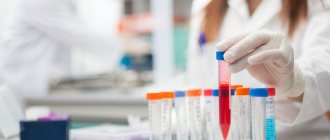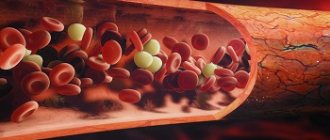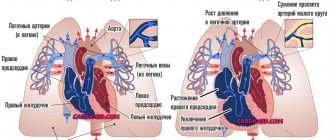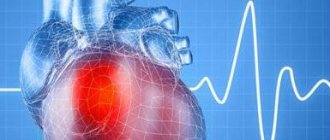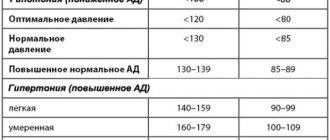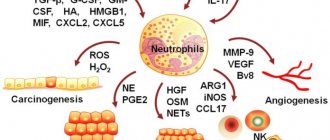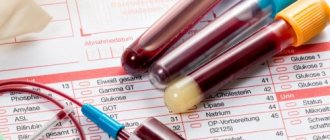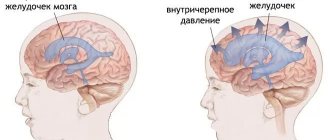One of the indicators of a coagulogram is PTI or prothrombin complex, the essence of which is an analysis of the time during which plasma coagulates in a person’s blood.
Subsequently, the obtained indicators are substituted into the formula and expressed as a percentage.
Normal PTI indicators show from 78 to 142% using the Quick determination method, or from 95 to 105% when studied by other methods.
Determining the level of PTI is the multiplication of the prothrombin time (PT) of the patient individually by 100% PT of the normal plasma coagulation index. Prothrombin time is the period from the moment when thromboplastin and calcium cells are added to the blood until the moment when a blood clot forms.
PTI shows blood clotting activity. A drop in readings indicates poor clotting, which leads to hemorrhages. An increase in its levels indicates the tendency of the circulatory system to form blood clots, which can lead to serious illness or even death.
What is prothrombin itself?
Prothrombin is a special protein found in the blood and formed in the liver under the influence of vitamin K.
If the amount of vitamin K is insufficient, prothrombin levels drop.
Prothrombin is the parent of thrombin, which affects thrombosis. This protein directly affects the increase or decrease in blood clotting.
To study PTI, it is necessary to observe the rate of plasma coagulation for each person individually, since the indicator depends on the person. The ratio of time between these two values will be the prothrombin index.
If PTI is studied using the Quick method, then the functioning of prothrombin is detected according to the schedule. This graph gives more accuracy due to the fact that it is built on the basis of marks from the results of studies of plasma coagulation at dilutions of different concentrations.
Kwik analysis results are displayed as a graph
IPT always consists of analyzing a coagulogram, which is a comprehensive blood test for clotting.
Normal for women by age
PTI, the norm for women by age (the table provides a visual comparison), differs from the norm for men. Different age categories among representatives of the fairer sex also have characteristics presented in the table.
| Age period | PTI rate, percent (%) | INR rate |
| 0-1 month | 70-120% | 0.8-1.28 |
| 1 year | 50-100% | 0.8-1.28 |
| Preschool age | 70-140% | 0.8-1.28 |
| Prepubertal | 60-140% | 0.8-1.28 |
| Puberty | 60-150% | 0.8-1.28 |
| Adult women | 70-140% | 0.8-1.28 |
A coagulogram shows a normal PTI level.
The international normalized ratio is a less variable indicator. It depends on the use of anticoagulants, pregnancy and certain dietary habits.
For doctors, there are also a number of clinical situations that are often reflected in the results of the study on PTI and INR. Changes in hematocrit, for example. This is the percentage of blood formed elements to the total volume. INR and PTI can change when the indicator value is too high or when it is too low.
You should also pay attention to the possibility of a disease such as systemic lupus erythematosus or antiphospholipid syndrome. When a lupus anticoagulant is detected, the INR, PTI and other coagulogram values usually change.
For what purpose do they donate blood to study this protein?
Drawing conclusions from the results of such an analysis, a qualified physician can determine:
- Possible heart attack or pre-stroke condition,
- The appearance of blood clots, with varicose veins,
- Does a specific organism need vitamin K?
- Are there any abnormalities in liver function?
- What is the state of the blood levels responsible for clotting?
This analysis is especially necessary during imminent surgery. Since doctors need to take such features into account and know the recovery time after injuries.
PTI indicators indicate a disorder in blood clotting, which leads to bleeding or the formation of blood clots. The last two factors can lead to serious complications.
References
- Zobova, D.A., Paramonova, T.K., Tyurina, N.A. et al. Pathology of the hemostatic system in very early premature birth. – Journal of scientific articles, health and education in the 21st century, 2021. - No. 8. — P.185-187.
- Ponizovich, E.V., Zolotavina, M.L., Chernyavskaya, O.V. Changes in blood hemostasis in patients suffering from viral hepatitis. — Scientific forum: medicine, biology and chemistry, 2021. — pp. 13-17.
- Haram, K., Mortensen, J., Mastrolia, S. et al. Disseminated intravascular coagulation in the HELLP syndrome: how much do we really know? — The journal of maternal-fetal and neonatal medicine, 2017. — Vol. 30(7). — P. 779-788.
When is a PTI blood test prescribed?
There are a lot of factors in the presence of which a doctor can send you for an IPT examination.
Among which:
- Autoimmune diseases,
- Chronic liver abnormalities,
- Detection of thromboembolism,
- With hepatitis,
- When liver cells die (cirrhosis),
- Oncological diseases,
- In case of an upcoming operation,
- In case of varicose veins,
- When clotting abnormalities occur,
- Checking the effectiveness of therapy,
- Post-infarction or after a stroke,
- and other pathologies.
It is imperative that PTI should be monitored regularly by those who have heart valve implants, because in these cases its level is increased, which increases the risk of blood clots. And also for cardiovascular pathologies. A coagulogram (including PTI) will help control all these processes.
The best clinics and hematologists
Who is a hematologist?
Many people do not know what these specialists treat. As a rule, people get an appointment with a hematologist by referral from a general practitioner and other doctors.
Reference! The scope of activity of hematologists is limited to diseases of the blood, spleen and bone marrow.
A hematologist specializes in diseases of the blood and hematopoietic organs.
What a hematologist treats is explained in the video:
The best doctors in Russia
Kiryushchenkov Petr Alexandrovich, Moscow
Head of the clinical hemostasiology group at the Scientific Center for Geology and Pediatrics named after. IN AND. Kulakova. Obstetrician-gynecologist, hematologist, hemostasiologist.
Reference! Hemostasiology is an even narrower field associated with the study of blood clotting.
The specialist's experience is 29 years. Petr Aleksandrovich is the author of more than 180 teaching aids and monographs, and often speaks at scientific and practical conferences in Russia and other countries.
The doctor specializes in the diagnosis, prevention and treatment of complications associated with blood clotting during and after pregnancy and surgical procedures.
Kvasova Elena Vladimirovna, St. Petersburg:
- Hematologist, nephrologist, cardiologist.
- Works in the field of diseases of the heart, blood vessels, blood and organs in which blood cells are formed, kidneys.
- Doctor of the highest qualification category. Work experience - 22 years.
Elena Vladimirovna is the author of more than 10 works on the diagnosis and treatment of non-Hodgkin lymphomas.
Udalieva Vera Yurievna, St. Petersburg
Hematologist of the highest qualification category with 26 years of experience, Candidate of Medical Sciences. Specializes in the diagnosis and treatment of blood diseases.
Vera Yurievna has more than 40 scientific papers to her credit. She takes part in medical research and has awards from the Ministry of Health of the Russian Federation and the Health Committee of the Administration of St. Petersburg.
Mironov Sergey Leonidovich, Rostov-on-Don:
- Cardiologist, hematologist of the highest category. Experience: more than 30 years.
- Sergei Leonidovich has numerous certificates in cardiology, hematology, ultrasound diagnostics, and over 60 medical publications in Russian and foreign sources.
- The specialist takes part in numerous congresses of cardiologists and therapists both in Russia and abroad.
Member of the Presidium of the Society of Cardiologists of the Rostov Region, the European Society of Cardiology, freelance consultant physician of the Rostov Regional Bureau of Forensic Medicine.
Volkova Svetlana Anatolyevna, Nizhny Novgorod
Therapist, hematologist of the highest category, candidate of medical sciences, associate professor. She studied abroad in the best institutions in Europe.
Author of more than 80 scientific publications, work experience - 25 years.
Normal PTI indicators
The values of this protein are indicated as a percentage. Standards vary depending on the method of determination. According to Quick, normal grades range from 78 to 142 percent, while according to other studies, from 95 to 105 percent.
The ambiguity of the indicators is associated with the different sensitivity of the reagents; different types of laboratories use different ones. PTI is considered an outdated indicator, and an indicator almost never used in modern medicine. It was replaced by the INR (international normalized ratio).
Back in 1983, the Ministry of Health introduced this value in order to obtain the same PT results obtained by different laboratories with different reagents. The INR is not affected by the conditions created by the laboratory; the INR norm shows from 0.82-1.18 for the adult category of people, and from 2 to 3 during anticoagulant therapy.
Norm for women
As such, there are no differences in the results of levels between women and men. The norms are standard for both sexes.
Normal PTI during pregnancy
Great attention should be paid to analyzing the coagulogram, and in particular the PTI during gestation. All expectant mothers must undergo this procedure. The risk of bleeding or progression of thrombosis during childbirth is determined based on this analysis. When PTI readings are below 80%, it is low - as a result, coagulants are prescribed so as not to lose a lot of blood during childbirth. If the concentration percentage is 100, then the therapy is directed in the opposite direction.
Do not skimp on tests - this will help save the life of both you and your unborn child. Deciphering the analysis by a qualified doctor takes five minutes. And this will significantly speed up the treatment process.
Decoding the results
The assessment is carried out in a laboratory setting. First, the time interval in seconds is determined. Next, the indices are automatically calculated: INR and PTI. The international normalized ratio does not have a unit of measurement; it is usually an integer greater than 0. At the same time, the prothrombin index is expressed as a percentage. Contrary to the laws of arithmetic, this figure can be more than 100%.
The following factors influence the norm in each specific case:
- floor;
- age;
- height and build;
- nutritional features;
- taking medications;
- pregnancy and lactation for women.
The index obtained during the study, like the INR, is compared with the conditional norm.
What affects low prothrombin index values?
Deviations from the norm are not good signs and may indicate the presence of various pathologies.
Its level may be reduced for the following reasons:
- Low presence of vitamin K in the body, which affects blood clotting,
- In the case of pancreatic cancer,
- Pathologies of the pancreas,
- Chronic pathology of blood clotting,
- Treatment with indirect anticoagulants,
- When a protein metabolism disorder occurs,
- Oversaturation of blood with heparin,
- In the case of acute leukemia,
- and other pathologies.
Where to take a prothrombin test in St. Petersburg?
You can get tested for antibodies to prothrombin in St. Petersburg at our MRI center and RIORIT clinic. You can make an appointment and find out the cost of the examination by phone..
MRI and ultrasound center RIORIT
Area:
Kalininsky
Metro:
metro station Grazhdansky Prospekt, metro station Devyatkino, metro station Prospekt Prosveshcheniya
Address:
St. Petersburg, Kalininsky district, st. Rustaveli, 66 lit. G
Telephone:
Equipment:
Siemens, open type
Schedule:
Around the clock
Normal levels and INR formula
INR (International Normalized Ratio) gives us an indicator of the rate of thrombus formation. Standard marks vary, being directly dependent on the characteristics (Table 1):
Table 1
| Situation | Normal indicators |
| For the normal course of surgical interventions | 0,85-1,25 |
| In the presence of chronic atrial fibrillation, pulmonary embolism and taking Warfarin | 2,0-3,0 |
| After aortic valve and mitral valve implantation, respectively | 2,5-3,0, 2,5-3,5 |
| For pathologies of the heart valves, and in the case of thromboembolism prevention | 2,0-3,0 |
| After surgery, with thrombosis of blood vessels and veins | 2,0-3,0 |
| For vascular pathologies or infarction conditions | 3,0-4,5 |
For an ordinary person who does not use medications, the normal level cannot exceed 1.25.
How to take a correct coagulogram?
When taking a coagulogram, like any other analysis, to obtain an absolutely accurate result, there are recommendations:
- Come for analysis exclusively on an empty stomach, stopping eating at least 8 hours before the test,
- If you want to drink, you are allowed to drink only clean drinking water without gas. Before delivery, you need to drink 200-250 ml of water (1 glass),
- No later than 24 hours in advance, do not smoke cigarettes, or quit this habit no later than 2 hours in advance,
- Don't worry before donating blood. Coagulability may increase due to stressful conditions and experiences,
- When using any medications, you must notify your doctor.
Reasons for the increase
If the prothrombin index is elevated, this is evidence of excessive activity of proteins and enzymes that ensure normal coagulation. This phenomenon occurs less frequently. The main danger is the increased risk of blood clots.
There are relatively few formation factors:
- Malignant processes in the body. Cancerous tumors of any location. Mainly those that affect the bone marrow, liver, and organs of the digestive tract. Less often others.
Also large neoplasias or decaying structures in advanced stages. When the body is forced to clot blood faster due to massive destruction of abnormal tissue in order to prevent death.
- Allergic reactions. The phenomenon is temporary. It is necessary to eliminate the body's inadequate immune response as quickly as possible. Deviations in indicators for chronic diseases of this type are especially noticeable.
- Deficiency of vitamins C and K.
- Lesions of the gastrointestinal tract. The intestines, since the absorption of nutritional compounds is impaired, also the stomach. The liver stands apart. It is responsible for the normal synthesis of coagulation factors. Any deviations can cause illness. Diagnoses such as cirrhosis and structural abnormalities are especially dangerous.
- A high prothrombin index occurs in dysbacteriosis, when the balance of beneficial and opportunistic microflora is disturbed in the direction of increasing the amount of the latter. The decay processes slow down, and the evacuation of feces is disrupted. This leads to the release of toxins into the blood, poisoning the entire body. These poisons have the property of activating prothrombin indirectly. The reason is not so obvious, but no less dangerous.
When assessing the results and searching for pathological processes, it is necessary to take into account possible deviations of reference values in the specific laboratory where the study took place.
